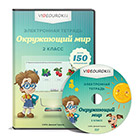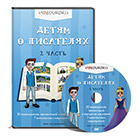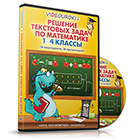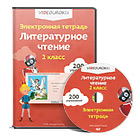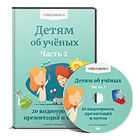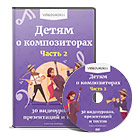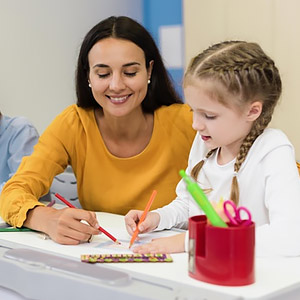МОУ «Майская школа с крымскотатарским языком обучения» Джанкойского района Республики Крым
Методическая разработка внеклассного мероприятия участника конкурса «Урок Победы» в номинации «Лучший урок иностранного языка»
"The 75 th Anniversary of the Great Victory"
Учитель английского языка:
Мустафаева Лейля Назимовна
с. Майское, 2019 г.
Тема: "The 75 th Anniversary of the Great Victory" (Слайд 1)
Тип урока: внеклассное мероприятие
Форма проведения урока: урок на основе нетрадиционной подачи материала: урок мудрости
Цели и задачи ( Слайд 2)
Активизировать фонетические и лексические навыки.
Развивать навыки чтения.
Дать представление о празднике 9 Мая, объяснить, что значила Победа для нашей страны;
Объяснить значение слов, связанных с темой, работа по запоминанию важных дат;
Воспитывать уважение к старшему поколению, к ветеранам;
Развивать речь, продолжить работу по обогащению словарного запаса;
Воспитывать любовь к Родине, бережное отношение к истории России, Крыма;
Развивать творческие способности учащихся;
Активировать познавательную деятельность учащихся, развивать навыки самостоятельной работы;
Развивать умение работать в команде;
излагать свои, аргументировать свою зрения.
Оборудование: доска, мультимедийная доска, презентация , Знамя Победы, фотографии военных лет, музыкальное сопровождение
Ход мероприятия
I. Организационный момент
Учитель приветствует детей
T: Good morning, children! I am glad to see you, sit down!
P: Good morning teacher! We are glad to see you, too! Thank you!
T: How are you, children?
P: I am fine, thank you!
II. Мотивация / целеполагание
T: Look at the blackboard. How do you think , what is the theme of our lesson?
What you can see there?
P. The heroes of the War, The poem, red carnations .
T. Who can read the poem ?
The beginning of May.
Red carnations
As the tears of those distant terrible years.
And veterans of the faces of the righteous,
Especially, which no longer exists.
When he suited the date of these.
For some reason I feel guilty –
Less remember the Victory,
More forget about the war.
( Слайд 3)
T: Who can name the theme of the lesson
P: We will speak about the Great Patriotic War II ( Слайд 3)
T: Thank you ! You are wright! We are going to discuss The Greate Patritic War and Victiry day!
Teacher: And now we announce the minute of silence. Stand up, please. (Учитель объявляет минуту молчания )
(A minute of silence) ( Слайд 4)
Teacher: Sit down, please.
III Основная часть
T: Today we will talk about Victory day in Russia.
Teacher: War is a terrible word. How many people were lost! Millions … Children … They were victims of the war. Many of them were lost, they lost their parents, and they were in death camps. Children worked at factories, fields. The life of children was very difficult.
Let`s read the verse. All the national pain of waiting and hope for the better life expressed in the lines of this verse (Ученики читаю стихи на изусть )
Wait for me” (“Жди меня”), Konstantin Simonov ( Слайд 6)
Wait for me, I will return.
Wait for all you’re worth.
Wait, when sulphurous rains they burn
Snuffing out all mirth,
Wait, as drifting snow it drops,
Wait, when heat’s too much.
Wait, when wait for others stops,
Past has lost its clutch.
Wait, when from that distant land
Letters do not come.
Wait, when all are weary and
Leave the wait to some.
Жди меня, и я вернусь.
Только очень жди,
Жди, когда наводят грусть
Желтые дожди,
Жди, когда снега метут,
Жди, когда жара,
Жди, когда других не ждут,
Позабыв вчера.
Жди, когда из дальних мест
Писем не придет,
Жди, когда уж надоест
Всем, кто вместе ждет
Teacher: We’re less than six months away from 2020, the year that will mark the 75th anniversary of the end of World War II. It’s a special day. It’s a wonderful holiday different from all other holidays. It is a national holiday and at the same time it’s a very personal one.
At down on 22, 1941, Hitlers armies attacked our country without declaring war. The great Patriotic War , which was to last about four years, had begun.
The hitleries brought 190 divisions into action on the first day of the war. They had the advantage of a surprise attack . Our soldiers courageously met the Nazis and fought them to the last.
Teacher: The Soviet people won the Great Patriotic War against a powerful enemy. The great war of liberation fought by our people against Nazism ended with total victory. And now we live in Peace. We live happily together with our family. ( Слайд 7)
Pupils sing the song together ( Ученики поют песню хором ) ( Слайд 8)
(Song “May there always be Sunshine!” Words by L.Oshanin. Music by A.Ostrovsky. Translated by Tom Botting)
May there always be sunshine,
May there always be blue skies,
May there always be Mummy,
Пусть всегда будет солнце,
Пусть всегда будет небо,
Пусть всегда будет мама,
Пусть всегда буду я!
May there always be me! (Twice)
After the song , pupils read the poems dedicated to the Victory Day (После песни ученики читают стихи посвященные ко Дню Победы ) ( Слайд 9)
Pupil1: The sun is so bright today,
Because it is the ninth of May.
The sky is so blue today,
Because it is the ninth of May.
And we are now so gay
Because it is the ninth of May.
Pupil2: We are happy children,
Strong and full of fun.
Look at our banner
In the bright, bright sun.
Pupil3: It’s the ninth of May
The ninth of May –
Oh, what a beautiful
Victory Day!
Teacher: It`s time to discuss the symbols of the Victory day and improve our knowledges
(Пришло время познакомиться с символикой) ( Слайд 10)
SYMBOLS OF THE VICTORY DAY IN RUSSIA:
St. George ribbon – this is black and orange ribbon that can be spotted on clothes, bags or tied to car antennas as a sign of respect and remembrance. The St. George ribbon corresponds to the ribbon, which covered the medal “For victory over Germany in the Great Patriotic War of 1941-1945.” Russia’s Imperial Order of St George and is associated with military glory. There is a free public action on the distribution of these symbolic ribbons dedicated to the celebration of the Victory Day in Russia which is held under the slogans: “Grandfather’s victory is my Victory”, “I remember! I’m proud!”, “We are the heirs of the Great Victory!”, “Thanks to my grandfather for the victory!”
Red carnations – blood red is the color of the Soviet flag under which the veterans had fought. In all Russian cities there is a ceremony of laying flowers to the Eternal Flame, usually it is an even number of red carnations. And there is a tradition to to give flowers to veterans in the street.
The Red Star medal – a military distinction for bravery.
T: We all love our home , our Homeland! Everyone had grandparents ,who took part in war events. Each of us heard the story from their words many times . ( Слайд 11)
“ Who does not love his country cannot love anything.”
Byron George Gordon
Today I want to tell you about some facts from history of Crimea in the Great World War IIThe Siege Of Sevastopol: Why The Crimean Campaign Means So Much To Moscow
Teacher: The fierce fighting on the Crimean Peninsula -- and particularly around the strategic port city of Sevastopol -- is one of the most dramatic and impressive pages of the Soviet Union's struggle during World War II.
Pupil: During the siege of Sevastopol, Soviet forces used all resources available. Black Sea Fleet sailors and marines were pressed into infantry duty. The more than 100,000 civilians in Sevastopol at the time of the siege were also mustered into service, performing duties such as building fortifications and moving supplies from the port to the defense perimeter.
After the German defeat at Stalingrad in February 1943, the tide on the Soviet-German front began to shift. In late 1943, the Soviets prepared to retake Crimea by a combined assault across the Kerch Strait and down the Perekop Isthmus. The Soviets forced German prisoners of war to build walkways through the shallow Syvash Sea to enable Red Army forces to support the attack on the isthmus. By April 1944, the Germans had been pushed back into Sevastopol and the Red Army began its assault on the port. The Germans did not have the time or the resources to rebuild the defenses of Sevastopol. However, the fighting among the ruins was brutal. Hitler's generals advised him to evacuate the city to avoid "another Stalingrad," but he insisted that it be held at all costs.
The German forces began evacuating the city in early May 1944. Many of the transport ships were sunk by Soviet bombers. On May 10, bombers sunk the "Totila" and the "Teja" with a loss of some 10,000 lives. In all, the Axis forces lost nearly 60,000 men. The last pockets of Axis resistance on Crimea were eliminated by May 12, 1944. On May 18, 1944, just days after the final liberation of Crimea, Stalin ordered the Red Army to forcibly deport the more than 200,000 Crimean Tatars who inhabited the peninsula. The Soviet government alleged that the Crimean Tatars had collaborated with the Nazis and sent them to remote locations in Russia and Central Asia. It is estimated that more than half of the entire Crimean Tatar population died during the first year of the deportation. Crimean Tatars began returning to Crimea in the late 1980s and now make up about 20 percent of the population. In February 1945, the leaders of the three main Allied powers met at a former tsarist palace outside the Crimean town of Yalta to discuss the final stages of the war against Germany and Japan and the postwar order. The meeting resulted in such key decisions as the agreement to accept only the unconditional surrender of Germany and to divide the country and the city of Berlin into four occupation zones. The Allies agreed to German reparations, including the use of forced labor. The Allies agreed to hand over to the Soviets all Soviet citizens regardless of their wishes. Stalin agreed to join the United Nations and to allow free elections in Poland. He also agreed that the Soviet Union would enter the war against Japan within 90 days after Germany's defeat.
Teacher: On the eve of Victory Day, RIA Novosti (Crimea) made the TOP monuments of the peninsula, which are a reminder of the heroism of the people during the Great Patriotic War
Crimea is heroic: TOP-10 monuments of World War II
Pupil 1: The first monuments dedicated to the period of the Great Patriotic War appeared in the Crimea immediately after its liberation - in the spring of 1944. Today there are more than 2 thousand. In the legendary Sevastopol there are only about 400 sculptures installed in honor of the heroic events and valiant people of this bloody war.
Obelisk of Glory on Mount Mithridates( Слайд 12)
Pupil 1: In Crimea, one of the first great monument dedicated to the events of World War II was the Obelisk of Glory on Mount Mithridates in Kerch. It was opened in 1944. The monument was erected in memory of the soldiers and officers of the Separate Maritime Army and sailors of the Azov military flotilla, as well as all the soldiers who died in the battles for the liberation of Crimea. ( Слайд 12)
Pupil 2: On the banks of the Kerch Strait, the monument "Sail", dedicated to the Eltigen landing, was installed. It is located on a hill in the village of Heroyskoye (Kerch), at an altitude of 30 meters above sea level. Thanks to this, the monument is clearly visible both from the sea and from the coast. ( Слайд 13)
Pupil 2: In the center of Sevastopol, on Nakhimov Square, a large-scale monument dedicated to the feat of the city during the Great Patriotic War was erected. It is a concrete wall with a relief image of a warrior, which reflects the attack of the enemy. Enemy bayonets are directed at the soldier, which symbolize the three offensives of the Nazis in 1941-1942.
Monument to Sailor and Soldier( Слайд 13)
Pupil 3: The monument to "Sailor and Soldier" was installed in Sevastopol at the Cape Khrustalny.
The monument is a composition of figures of an armed sailor and soldier rushing into battle.
The legendary armored train "Zheleznyakov", built in 1941, belonged to the main base of the Black Sea Fleet. He actively participated in the heroic defense of Sevastopol during the Great Patriotic War. German soldiers nicknamed this car the "Green Ghost." And for good reason. ( Слайд 14)
Pupil 3: A memorial sign "Partisan hat" is installed on the Angarsk Pass, in the village of Perevalnoye, Simferopol District, It is located on the side of the road for 27 km of the Simferopol-Alushta highway. ( Слайд 14)
Partisan detachments were actively operating in these places during the German occupation of Crimea.
Pupil 4: More than 700 marines landed on the Evpatoria coast in January 1942. As a result of fierce battles that lasted several days, fewer than a hundred soldiers survived. Despite the defeat, the landing was able to divert part of the enemy forces from Sevastopol and helped to consolidate the success of Soviet troops on the Kerch Peninsula. ( Слайд 15)
Pupil 4: During the German occupation of Evpatoria in 1941-1942, more than 12 thousand civilians were shot. In memory of the victims of fascist terror in 1954, a memorial complex "Krasnaya Gorka" was created in the city, on the territory of which a monument to the grieving mother was erected. ( Слайд 15)
Pupil 5: A monument to the soldiers of the Separate Primorye Army, who in April 1944 liberated the city from Nazi invaders, was erected in the park "Jubileyniy" in Feodosia.
( Слайд 16)
Pupil 5: A commemorative sign is installed in the form of a T-34 tank In the center of Simferopol, in Victory Square,. It is also a reminder of the heroism of Soviet soldiers during the Great Patriotic War( Слайд 16)
IV Заключение ( Слайд 17)
Teacher: The English language unites people nowadays and helps to live in peace together. We’ll remember the Great Victory and claim for the peace in the world with the help of English at our lesson today.
We are celebrating the 75th anniversary of the Great Victory on the 9th of May in 2020; Victory Day is one of the most important holidays in our country. It is also a great holiday for all the countries which fought in the Second World War against fascism. We should never forget those who gave their lives for our future. Let’s listen to the poem “Remember”.
Alime and Lilya come up to the blackboard. (На экран проецируется стихотворение «Remember»
Р.Рождественского, один из учеников читает его наизусть)
Pupil1:
Pupil2
Remember!
In centuries,
In years – remember!
About those,
Who has never come,
Remember!
Do not cry!
In a throat, you must restrain groans,
Bitter groans.
Be worthy of heroes!
Be eternally worthy!
Помните!
Через века, через года, — помните!
О тех, кто уже не придет никогда, — помните!
Не плачьте!
В горле сдержите стоны, горькие стоны.
Памяти павших будьте достойны!
Вечно достойны!
V Рефлексия ( Слайд 18)
Let`s have a look at the blackboard and answer the questions
When did the war started? .( on the 22nd of June 1941)
Who started the war? (Germany )
Who won the war? (the Soviet Union)
What was the date when the war ended? ( in 1945)
What is the main symbol of Victory day? (St. George ribbonm, Red carnations, The Red Star medal)
Were those years of war tragic or unbearable ones? (Yes )
Can the war be called a national tragedy? (Yes)
What Hero Cities of Crimea do you know? (Sevastopol and Feodosiya )
What Heroic monuments of Crimea do you Know? (Monument to the T-34 tank, Monument to paratrooper sailors)





